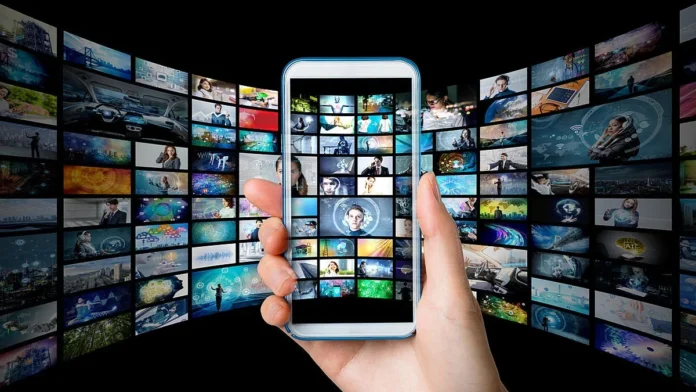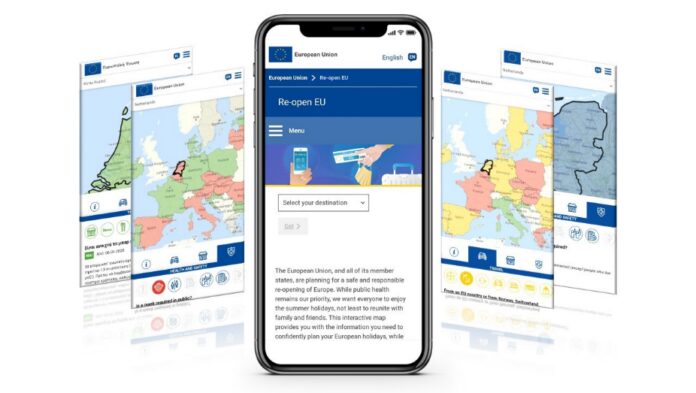The COVID-19 Pandemic has also been dubbed as the time of the digital revolution. Over the last year, we have seen how technology helps fight against pandemics. In just a few months of the crisis, years of technological changes have been witnessed in how the world works.
The pandemic accelerated more than ten key technology trends in various sectors, including decentralized financial services, healthcare, robotics, online deliveries, entertainment, etc. Overall, technology has made society more resilient in dealing with the COVID-19 pandemic and related threats.
During this time, digital transformation and technology have played a significant role in keeping our lives functional and meaningful. These effects will have a long-lasting impact that will extend beyond the fight against COVID-19.
Here are some of the technology trends that have helped people worldwide with the pandemic.
10 Digital Trends of the COVID-19 Pandemic
1. Online Shopping

In late 2002, China saw a surge in the growth of business-to-consumer online marketplace platforms promising super-fast delivery. Similarly, the COVID-19 pandemic has remodeled the online shopping forum. It has never been easier to order something from the internet and get it delivered within a day.
Most online marketplaces, such as Amazon, eBay, Flipkart, Alibaba, etc., guarantee their customers one-day deliveries. Since in-person deliveries can cause the transmission of the virus, the US is developing contactless delivery systems where goods will be picked up and dropped off at a designated location. There have also been subsequent advancements in robot deliveries.
2. Distance or online learning

Educational institutions and schools were among the worst affected by the pandemic. In April 2025, more than 191 countries announced that schools would implement online or distance learning, which has impacted about 1.57 billion students.
Even though online learning can widen the digital divide and create economic pressure on parents, no one can deny that it has helped many across the world. In the absence of online schools, students’ education would be stalled. Luckily, the world has been able to avoid that collectively. There have also been innovations in online learning platforms helping students cope with distance education.
3. Telehealth

Telehealth has proved to be an effective technological advancement for the fight against COVID-19. It is useful in containing the spread of the virus while providing primary healthcare services. Wearable IoT devices can track a person’s vitals, and chatbots can help patients with the initial diagnosis.
However, the major drawback to telehealth is that it can be expensive if not insured, and it requires tech literacy to operate.
4. Global Supply Chains

The pandemic created major disruptions in the functioning of the global supply chains. Last year, there were worldwide lockdown orders with distancing, which forced several factories to shut down. At the same time, the demand for food, medicines, and protective equipment was exacerbated, and companies had to implement export bans.
Therefore, the supply chain became extremely vulnerable during the pandemic. Luckily, with the innovations in blockchain, Big Data, cloud computing, IoT, and so on, a more resilient global supply chain was built. This helped in an adequate management system with data sharing and data accuracy.
5. Contactless Payments

Banks across the globe have successfully implemented measures to facilitate contactless digital payments in the form of e-wallets and cards. Since cash can cause easy transmission of the virus, these online payment systems have been acknowledged as the recommended payment method to stop the spread of the COVID-19 virus.
Digital payments have made it easy for people to make payments of goods, services, online purchases, utility purchases such as bill payments, and send and receive funds faster. This promotes decentralized finance and the future of crypto as the middlemen have been eliminated.
6. Online Entertainment

The quarantine measures left people worldwide frustrated with the limited options of entertainment. Luckily, online streaming of concerts has gained traction, and production companies are keener on releasing movies online through streaming platforms like Netflix, AppleTV+, and Amazon Prime.
In addition, there has also been an impressive surge in the online gaming and casino industry. People can now release the stress and play in online casinos through gambling.com and other gambling platforms. There is no shortage of online slot games and simulation games that can keep users entertained for hours at a stretch. There has been a surge in online games in the last year.
7. Communication

Since lockdowns were imposed as early as March 2025, many people were stranded in different parts of the world, unable to return to their families. Technological advancements in the communication sector have become significant during such a time.
Through social media platforms, one can reach out to their family members. Platforms like GMeet and Zoom have also made it possible for businesses to conduct their affairs with virtual face-to-face interaction.
8. Remote Work

Many companies have requested their employees to work from home. Remote work has been made functional through technological trends like VPN, virtual meetings, work collaboration tools, voice-over-internet protocols, cloud technology, etc.
There are several advantages to remote work. It prevents the spread of the virus, saves commute time, and offers flexibility to the employees. Overall, employees can have a better work-life balance while staying productive and meeting their deadlines.
9. Traveling

Technology has made traveling safer by limiting contact. Flights and hotels can be easily booked online. The process of electronic documentation has reduced the need for personal contact. Electronic passports and electronic visas have made travel more accessible. And, airport security and related travel technologies have been pushed to innovate and adapt.
10. Dissemination of Information

Companies like Facebook and Google are trying hard to ensure that people have unbiased access to validated and accurate information. This has come in handy, especially when medical misinformation and fake news can cost lives. The objective is to make information accessible and ensure transparency.
This way more and more people can be educated about what is going on in the world and how to protect themselves during times of crisis. News channels have quickly adapted to the online mode and have become a valuable source of information for disseminating news about the pandemic, vaccines, etc.









